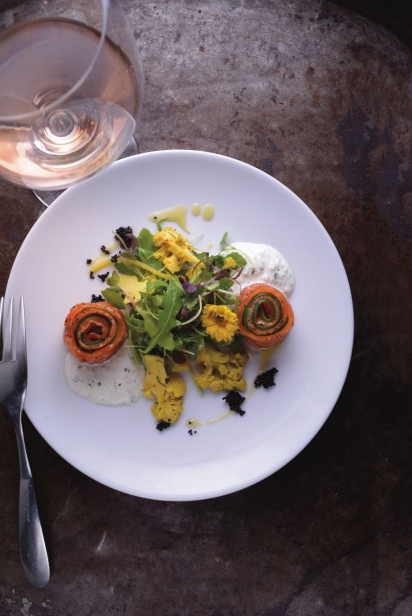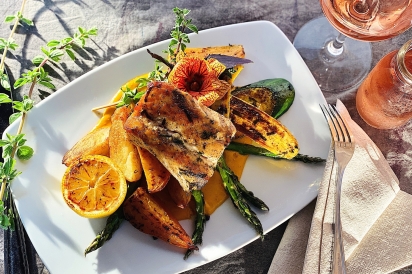Breaking The Rules For Perfect Pairings
Do you ever feel out of your depth when it comes to picking the best beverage to pair with your dinner? Do you struggle to choose just the right wine to serve dinner guests? Do you secretly worry that you will select the wrong drink and mess up a dining experience?
Pairing is part of human nature: We love to put things together to see if we can create something greater than the individual items. When it comes to food and wine (or beer, cider, coffee, tea, etc.) we are always searching for a combination that takes things to a level beyond. With that as a goal, it can be intimidating trying to decide what to drink with what we are eating.
One key to remember is there are many options for pairings. At the most basic level, the goal should be that the two can be enjoyed together without degrading the experience of either on its own.
PICKING A PAIRING
What Questions to Ask:
What do my guests (or I) like to drink?
There is no sense in focusing on what might be the “best” or “traditional” pairing if no one participating likes the beverage in the first place.
Champagne and oysters only work together if the consumers like bubbles (and oysters). Same with a crisp white wine pairing: The oysters and Albariño might be amazing together for some but not if the taster doesn’t like white wine.
Why is this wine being suggested?
Is it the bubbles? Is it the lightness, minerality, fruity-ness, type of fruity? This could lead you to trying cider or a fruity beer with dishes that are usually enjoyed with wine. Also, the trend of carbonic, chillable reds has opened a wider door for red wine drinkers to enjoy reds with dishes that are traditionally paired with white wines.
What flavor or component are we pairing to?
Too often we look at the main component of the dish—for example, a ribeye steak or a salmon dish.
Yes, there are wines that will work with those proteins, but that is just a base. What else is being served? What types of seasoning are being used? This is where many variables can come into play. Does the dish need something light and bright? Can this dish hold up to big, bold flavors? Is the food spicy? Is it rich?
For a fish dish, typically we look for a light, usually bright, white wine. But a lighter-bodied red or the above-mentioned chillable reds would work, especially with sweeter seasonings like a shrimp and artichoke citrus salad, or a teriyaki salmon that might lend to some fresh plum, strawberry or cherry flavors. Pinot Noir with more of a savory herb profile would also work. And there is always rosé, which can pair with so many flavors.
On the opposite end of the spectrum there is the ribeye: If you’re going for big, bold char grill notes, then yes, the traditional oaky Cabernet blend would be great. However, for those who don’t drink big reds, a round richer Chardonnay or Roussanne would be able to hold up next to those big meaty flavors. Flavors of toast and butter don’t hate steak.
Remember that if you are choosing to pair, the beverage is now part of your dish. Think of it the same way you might about the seasonings you add to the food.
SOME TIPS ON PAIRING PROBLEMS
Spicy
Acidity in wine increases spicy-ness in food. This is where all of the “I only want dry wines” goes out the window.
Slightly sweet or “demi-sec” wines help balance out the heat so they can be enjoyed and even refreshing while your tongue battles the chiles.
Bubbles are not helpful with spice either, similar reasoning as above. Reds, fruity reds, not necessarily super high in alcohol, would work here as well.
Creamy
Pairings are usually either a match to something or the opposite. Creamy, bold wines can match creamy, bold dishes. Crisp, bright wines can cut through those same dishes and create a different but equally enjoyable experience.
Locality
In Europe, wine varietals and recipes have been entwined together in culture for centuries. Wines were meant to be consumed with the local cuisine and winemaking styles developed over time to create complementary pairings. It never hurts to talk to local chefs who focus on sourcing food from the region and create meals to complement the wines produced locally. (See Gabe Garcia at Tierra Sur and Dominic O’Reilly of Anna’s Cider, for example.)
LET’S THROW OUT THE RULES
Think for yourself!
Pairing is fun and an opportunity to spend a little more time thinking about what we eat and drink.
It can be engaging in a group setting to try and figure out which wine on a flight goes best with which cheese on the platter. Often, the ripeness of the cheese or the age on the wine can send a previously perfect pairing into just a memory. There should be many different opinions, maybe even some disagreement, but it allows us to notice more subtleties in the wine that draw us to match the fruit with berries or the richness with a triple cream. Does adding a walnut to the mix change which wine goes better?
We talk of perfect pairings, but these are moments in time that come together by trying and sampling and revisiting.
Local wines with which to break the rules:
Ojai Vineyard Rosé: A blend with amazing acidity from the addition of white varietals to keep it lifted and bright. This is easy with fall salmon dishes where it can cut though the richness of the fish or a light creamy sauce over pasta and keep up with a fresh fruit in a salad like Paradise Pantry Purple Haze.
Cavaletti Nebbiolo: Great with some hefty BBQ ribs—bring on the sauce! The great lightweight yet structured tannins will complement some of your heavier foods but not weigh down the warm evenings of early fall.
Cavaletti Tempranillo: Campfire wine. Certainly it is great with steaks and burgers but equally enjoyable as the sunsets and the temp drops to cozy up to the campfire with yummy fruit and subtle oak.
We are lucky in California that many of the wines can hold their own with an experience pairing even without food. A tropical Sauvignon Blanc and a day reading at the beach make a great pairing. Refreshing, interesting and complete on its own.









